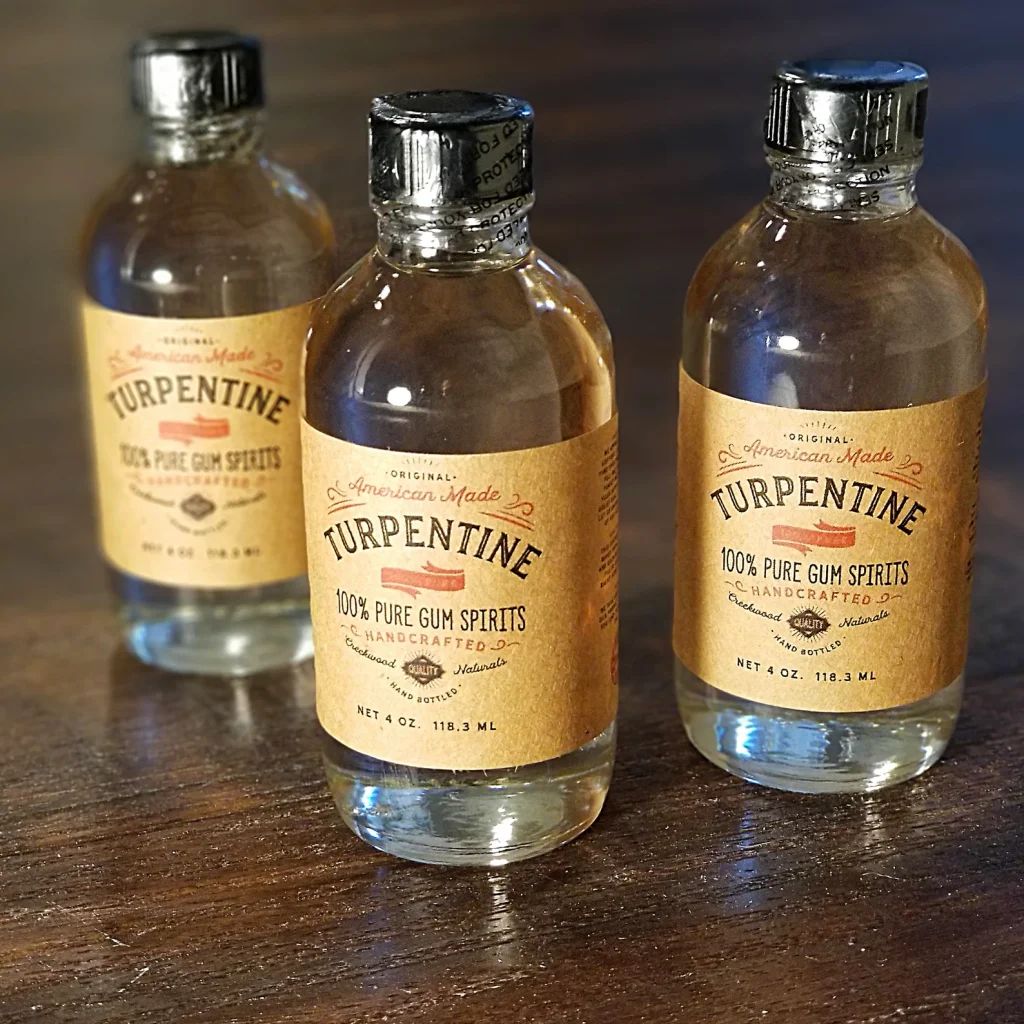When you are purchasing a new product, it is important to understand how long that product will last. You want to make sure that you don’t use it past when it is good anymore to prevent any negative side effects. Turpentine is one product that most people aren’t sure about expiring.
So, does turpentine expire? No. Turpentine doesn’t expire if it is stored properly. You should use a container that is airtight, which will keep your turpentine fresh and preventing oxygen from getting into the product. The original container, or a stainless steel airtight container will do the job.
Even though turpentine doesn’t expire, it’s still important that you store it and take care of it properly. This will prevent any leaking of the product that could potentially be dangerous to you and your family.
Does Turpentine Have a Shelf Life?

Turpentine does not have a specific shelf life when it is stored properly. This means that you should be able to use the same container of turpentine until it runs out.
The most important thing to remember to extend the life of your turpentine is to keep it stored properly. Keep it away from anything flammable, keep it away from direct sunlight, and keep the lid tightly closed.
I highly recommend storing your turpentine in the original container, or a Stainless Steele Container. This will ensure the turpentine is safe and stored airtight.

When you keep the lid closed as tightly as possible, it creates an airtight seal. This prevents oxygen from getting into the product and causing it to oxidize. Oxidation is the process that turpentine dries through, so leaving the lid open just a tiny bit can cause your product to dry out before you’ve had the time to use it.
Is Turpentine Toxic to Humans?

Turpentine is considered to be toxic and harmful to humans. There are several negative side effects that might be experienced when you are exposed to turpentine in different ways. You will experience the worst side effects if you accidentally get turpentine in your mouth.
If you accidentally swallow turpentine, you are going to experience some serious side effects. This might include sleeplessness, headaches, bleeding in your lungs, coughing, kidney damage, vomiting, coma, brain damage, and potentially death.
If you get turpentine on your skin, the side effects will be different for each individual person. One person might not have any kind of side effects, but another can have irritation or an allergic reaction. Too much turpentine coming in contact with your skin can cause damage to your kidneys or nervous system.
If you breathe in turpentine, you will experience some or severe discomfort in your lungs and throat depending on how much you inhaled. This reaction can be much worse in individuals who have weakened respiratory systems, asthma, or whooping cough.
Although turpentine can be harmful to everyone, it can be extra harmful to children, women who are pregnant or breastfeeding, those with allergies, or those with lung problems. You should avoid using turpentine around any people that fit these descriptions.
Why Does Turpentine Turn Brown?
If you are noticing that your turpentine is turning brown, it is probably because it wasn’t stored properly. The reason could be that it was stored somewhere too warm or in direct sunlight. It could also be from not closing the lid fully and letting oxygen in. Oxygen entering the container causes oxidation to occur, making the turpentine appear brown.
How to Store Turpentine

It is incredibly important to store turpentine properly. This goes for when you are using the turpentine and when you aren’t using it. Since turpentine is toxic, the first thing you need to do is make sure you store the product with the lid closed as tightly as possible. This will prevent any fumes from escaping.
You also need to store your turpentine away from any sources of heat and ignition. Turpentine is highly flammable and will easily catch fire. Keep it away from heaters, direct sunlight, candles, or any other item that might be able to start a fire.
It is also recommended that you store turpentine in an area that is cool and dark. The area should also be well-ventilated and dry. If you have a dedicated art space that fits these requirements, you can store your turpentine in there. If not, you should try to find an interior closet that has ventilation.
The best way to store your turpentine is in the original container. However, if this isn’t possible for some reason, your best option is to put it in a glass container that has an airtight lid. You want to avoid storing turpentine in anything plastic because it has the potential to eat through and cause several different problems.

When you are using turpentine, you will also need to make sure you are storing it properly. Always keep the lid tightly closed when you aren’t pouring the product. This will protect both you and the turpentine. The lid prevents the fumes from releasing into the air and it prevents oxygen from entering the turpentine and causing negative side effects.
If you plan on using turpentine to clean your brushes, you will need to pour some of the product into a separate, glass container. This will prevent any potential contamination to the turpentine and still allow you to use the product as you need.
Final Thoughts
When purchasing a new product, you always want to know how long it will last you. Luckily, turpentine has a very long shelf life and a practically non-existent expiration date as long as it is stored properly. The most important thing to remember with turpentine is the lid needs to remain closed as tightly as possible at all times.
Storage of turpentine also plays a huge role in how long it will last. You need to keep it in a cool, dry, dark area that has plenty of ventilation. Always make sure the lid is on completely before you store it because oxygen in the turpentine can cause it to turn brown. If you treat your turpentine properly, you should have no problem using it until the product runs out.
Make sure to follow all my tips and recommended products to ensure your turpentine project turns out great! Also, don’t forget to check out my other articles for all your painting Q&A’s. Happy painting!

